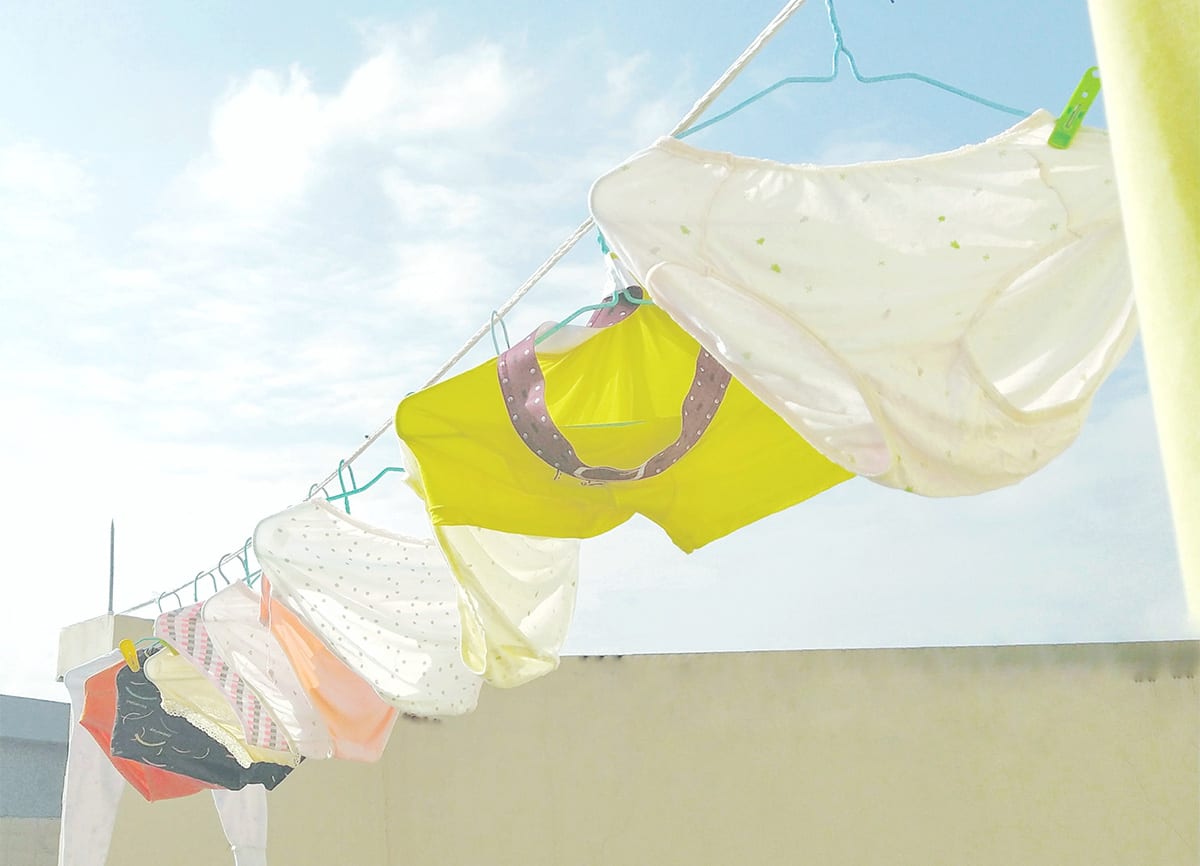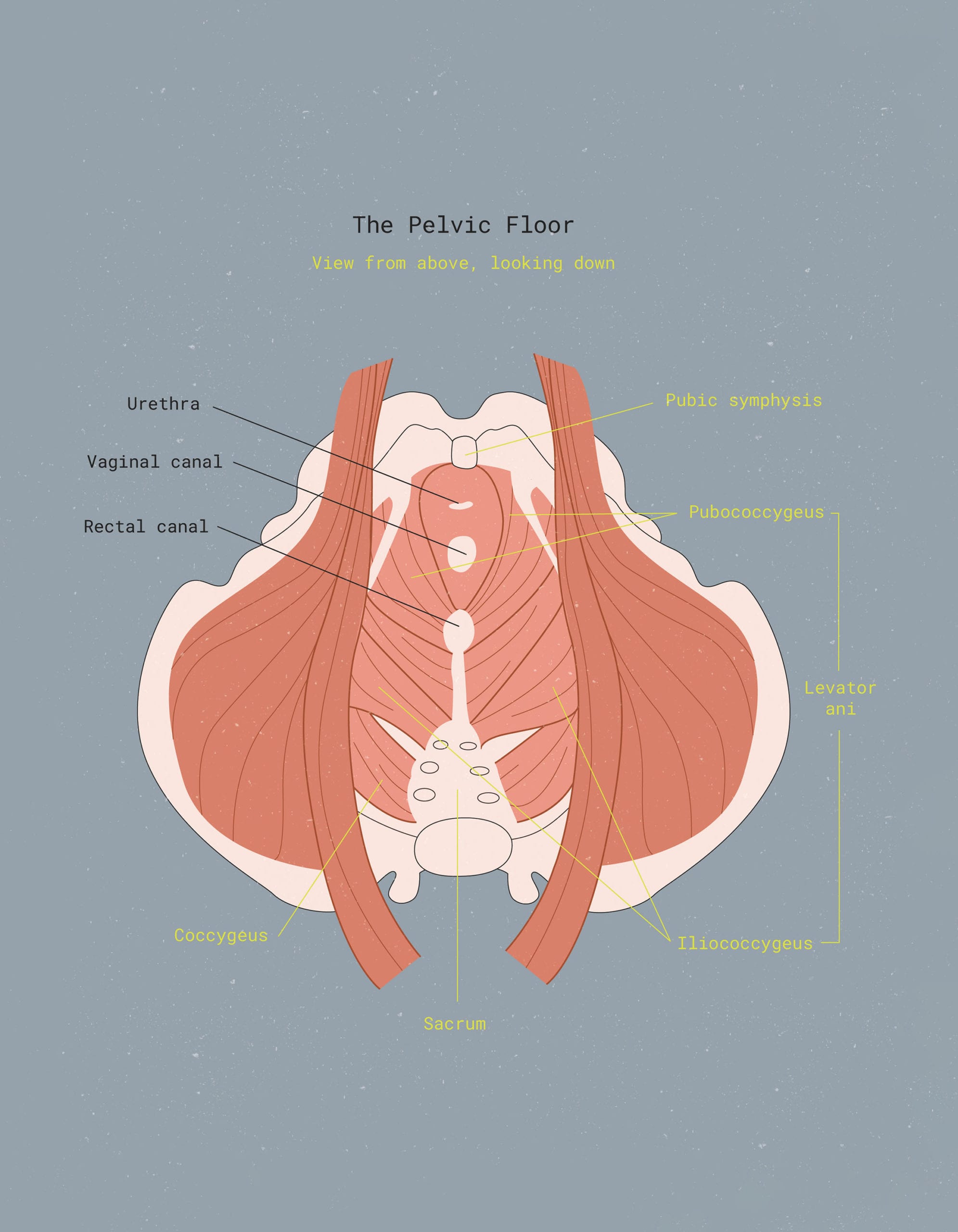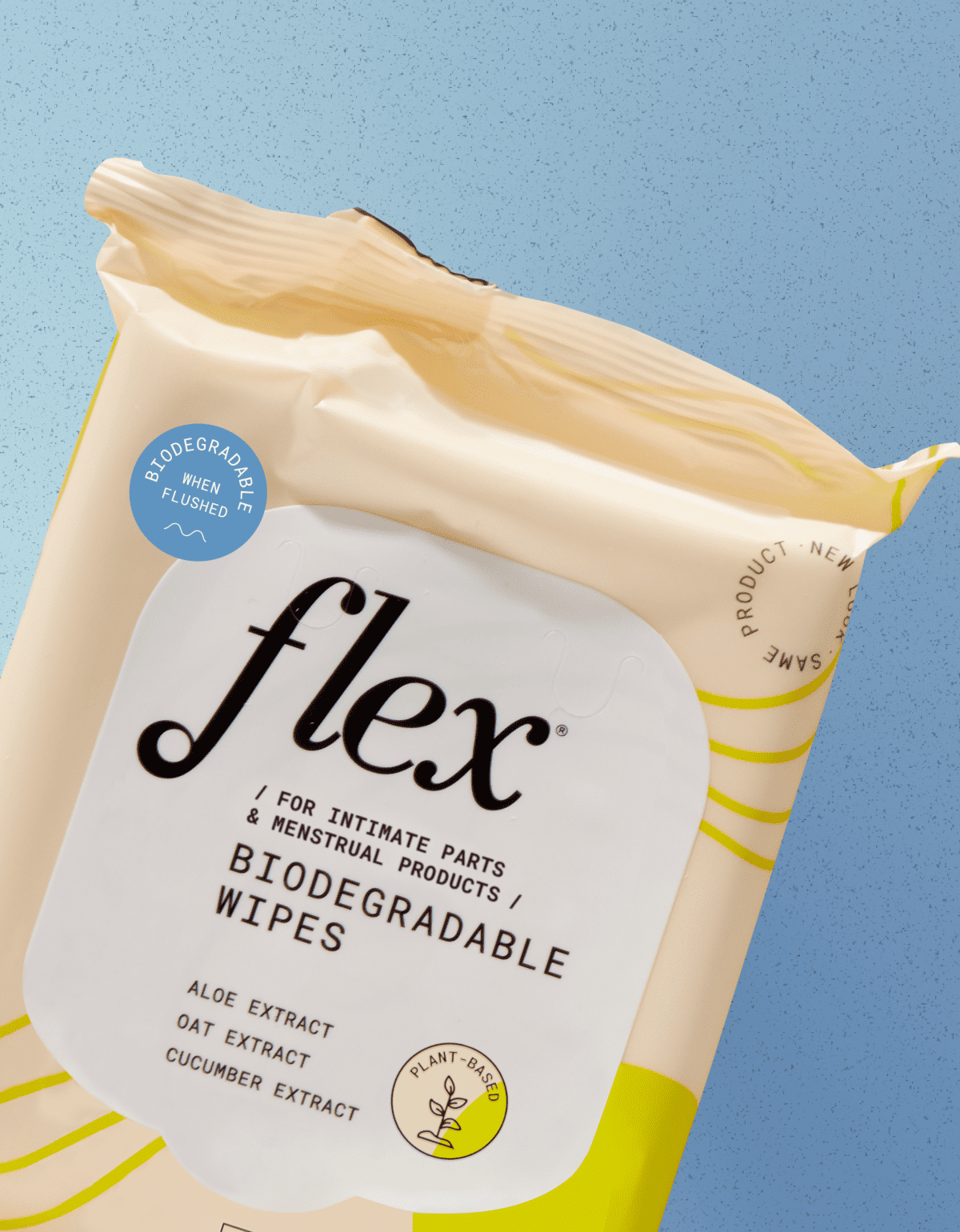Upgrade your undie drawer to keep your vag healthy
TL/DR: Your favorite pair of undies might just be doing your vagina more harm than good. Turns out, the fabric you choose has a serious impact on the bacterial ‘flora’ in your nether regions. Breathable underwear is better, but the best pair may vary depending on the activities you have planned for the day.
The underwear industry is worth somewhere around $30 billion.1 That means you have a lot of choices when it comes to what to rock down below – but not all of them are a friend to your vagina’s delicate ecosystem. In fact, the wrong pair of skivvies can set the stage for yeast infections, bacterial vaginosis (BV), and UTIs.2 Not the kind of weekend fun you were hoping for.
Whether you spend $25 or $2500 on your underwear collection, it’s worth taking a little time to get to know what you’re really investing in. When it comes to healthy underwear, fabric matters, and that mega-splurge lingerie set might not be doing your downstairs any favors. Oh, and those super comfortable boy shorts you’ve had for… um… 10 years? Time to hold a memorial service. Regularly refreshing your underwear drawer is key.
Here’s everything you need to know about the undie game and what’s the best underwear for your vagina:
1. Cotton on: Is cotton underwear best to prevent yeast infections?
If you’re the kind of person who prides themselves on having a sexy lingerie drawer (or you know, those with delicate lace trims), then this may come as a shock: cotton underwear is by far the best material to make underwear for your vagina. We’ll give you a minute to collect yourself.
Though it’s not the coolest or sexiest type of underwear for women to rock, cotton’s come a long way since its debut in your great-great-grandmother’s dresser. The natural material makes both a locally absorbent and breathable fabric, key characteristics of vag-friendly panties.

Yeast infection and underwear: Why are cotton underwear better for women?
Think back to your high school biology class: You might remember learning that yeast and bacteria thrive in warm, moist environments (same reason you need warm water to activate the little pouches of yeast used for baking). This is exactly the kind of environment that can crop up in your crotch, especially if your underwear doesn’t let it all breathe.
No shame on WAP, but it’s less of a good thing when you’re going about your day-to-day life. The hotter and sweatier your pubic area stays, the more likely you’ll end up with a bacterial imbalance or infection (such as BV or a UTI). Cotton fabric keeps the rainforest at bay by absorbing excess heat and moisture and allowing it to evaporate – all great news for your vagina.3
Cotton is also a potential money-saver. “Cotton is cotton, so whether it’s expensive or a Costco brand, all you need to do is look for the 100% cotton label and you’re good to go,” advises OB-GYN Dr. Tara Halpern. Easy money in the bank, baby.

2. Skimp on the synthetics: What’s up with lycra, nylon & spandex panties?
Hint: If it sounds other-wordly, it may not be the best thing to keep plastered to your labia for extended periods of time, and it will definitely not be the best underwear for sensitive vulvas. That said, lycra, nylon, and spandex do serve a purpose, so keep reading.
Synthetic fibers are made from synthetic materials, which are usually formed through an elaborate chemical process. But they’re not all bad: The upside to these kinds of materials (especially in women’s underwear) is that they’re more durable, stain resistant, and stretchier than their cotton or natural fiber counterparts. So, no need to dump your entire collection in the trash just yet.
While some MDs and OB-GYNs note that synthetic underwear isn’t likely to affect the interior of your vagina (i.e. the flora, pH balance, etc.), they do warn that these fabrics may not be ideal for individuals with sensitive skin or for those with existing vaginal infections.4 Remember: for any sort of funk, the best strategy is to let it breathe.
It’s worth mentioning that some brands have recently upped their game when it comes to moisture-wicking synthetic fabrics. Plenty of well-known athletics retailers have been searching for the underwear holy grail for years, experimenting with combinations of modal, lycra, nylon, and elastane engineered in a way that wicks sweat almost as well as natural materials like merino wool.
Synthetics vs. Natural fabrics: which one makes the best underwear
As long as these synthetics don’t cause any skin irritation (especially in your private parts), they have great vaginal health potential (but they do tend to come with a hefty price tag). For daily wear, look for pairs that have a cotton gusset – the strip of fabric that specifically lines the intimate area – for bonus breathability points.
However: If you’re trying to up your sustainability game, synthetic skivvies may not be the best material choice. Studies have found that plastics-based clothing (synthetics underwear included) is contributing to the pollution of our oceans, dispelling small quantities of those plastics into the environment each time you toss ‘em in the wash.5 Of course, there are environmental problems with cotton, too (think pesticides), but we’ll save that story for another day.
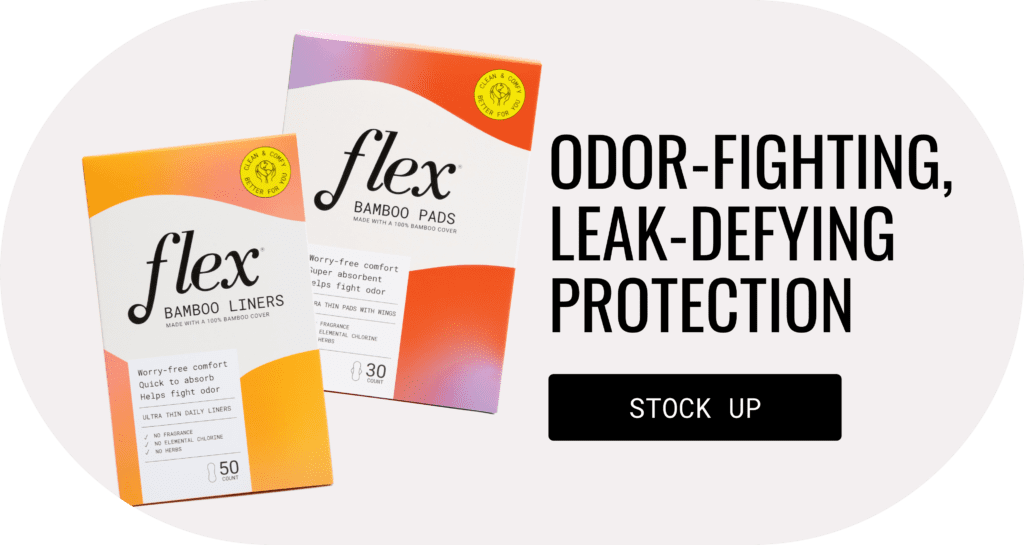
3. Sweaty v-etty: The best underwear for working out
Whether you’re sweating your way through an hour of hot yoga or kicking butt on a spin bike, it’s important to find a pair of underwear that’ll keep your delicate parts cool, calm, and collected throughout your workout (i.e., odorless and wedgie-free).
So, allow us to contradict ourselves for a moment: While cotton might be the creme de la creme when it comes to daily wear, it’s not a great option for your vagina during a gym sesh.
Basically, cotton’s absorbency makes it no bueno when you’re about to sweat non-stop for 30 minutes or more. It’ll soak up that sweat faster than it can evaporate, meaning you might as well be working out with a tiny wet towel between your legs. Plus, cotton tends to stretch out more easily; during a workout, it’s prone to losing its shape and elasticity (and winding up in an unfortunate spot between your butt cheeks and a more than visible panty line).
Pumping iron and skipping that cool neon jump rope you bought on Amazon are exercise moments when advanced moisture-wicking materials come in handy. Try a recycled nylon or spandex blend to control moisture levels, and make sure whichever pairs of underwear you choose to add to your wardrobe are the right size: some compression might be great in a bra or tank top, but it’s a no-go for your nether regions. Stick with a comfortable fit to avoid any weird circulatory issues.
Wondering if it’s healthy to work out in a thong? It may be a no-show panty line fave to wear under skin-tight leggings, but thongs are one of those underwear styles that can rub the wrong way during a workout if you aren’t careful. If you experience any chafing, switch to a different cut (like a pair of super lightweight, no-seam “infinity edge” hipsters) for next time.
Finally, always remember to shower and change into a fresh pair of underwear (or period underwear) ASAP after hitting the gym. Even the very best sweat-wicking quality fabrics will retain a little moisture after an intense workout, and you don’t want that living in your labia all day.

4. Let it breathe: Sometimes the best underwear is… no underwear
You know that feeling you get when you roll down the windows of your convertible Toyota Corolla on the first gorgeous day of summer?
Yeah, incredible. And your vagina digs the same thing (a.k.a. FRESH AIR). By taking a layer off and going commando, you’re not just freeing yourself psychologically – you’re also decreasing the amount of moisture buildup down under and reducing the risk of bacteria and yeast from taking hold.
“Don’t suffocate your body,” says OB-GYN Tara Halpern.6 “Wearing things that are form-fitting or too tight can cause bacterial imbalances.” With a wide size range for different body types available, try to find the perfect fit for you to avoid breathability or circulatory issues, especially on the leg openings and crotch areas. Sometimes, the best underwear material is no material.
Sleeping without underwear (or, f*ck it, staying naked at home all day) is a great way to give your vagina a chance to air out and recalibrate. The reasons to get nude are top-notch: Your birthday suit allows for airflow (goodbye dampness), gives your vagina a break from potentially irritating materials or detergents, and might even make it easier to fall asleep.7
Consider this a permission slip to get naked, stat. And maybe enjoy a little self-love, while you’re at it – easy access has its perks.
Bonus tip: Upgrade often
Wondering “can dirty underwear cause yeast infection?” The short answer is yes. Vintage t-shirts are cool – but vintage -or dirty- underwear is not. Did you know that the average pair of underwear contains about a tenth of a gram of poop? That’s even if it’s been washed.8 Gross.
Thankfully, in most cases, this microscopic quantity of fecal matter isn’t going to harm your vagina. As long as you’re washing your underwear properly (in hot water, after every wear), there’s no set time frame for how long you should hang on to them. It’s best to look for visual cues, instead.
Here’s our rule of thumb: If it has stains, holes, any sort of unwashable buildup, or a failing elastic waistband, it’s time to say goodbye. And if you’re really concerned about bacteria after a particularly dirty or sweaty day, invest in laundry detergent that contains peroxide: It does the best job at eradicating any vagina-harming organisms from your favorite pair of lacy boxer briefs.
Without a doubt, cotton is one of the best underwear materials for women. Now get back out there in your breathable cotton-polyester-alpaca high-rise fuller coverage granny panties (boxers or cotton everyday briefs) – or take them off and run wild. That free-vagina-in-the-wind moment is pretty hard to beat.
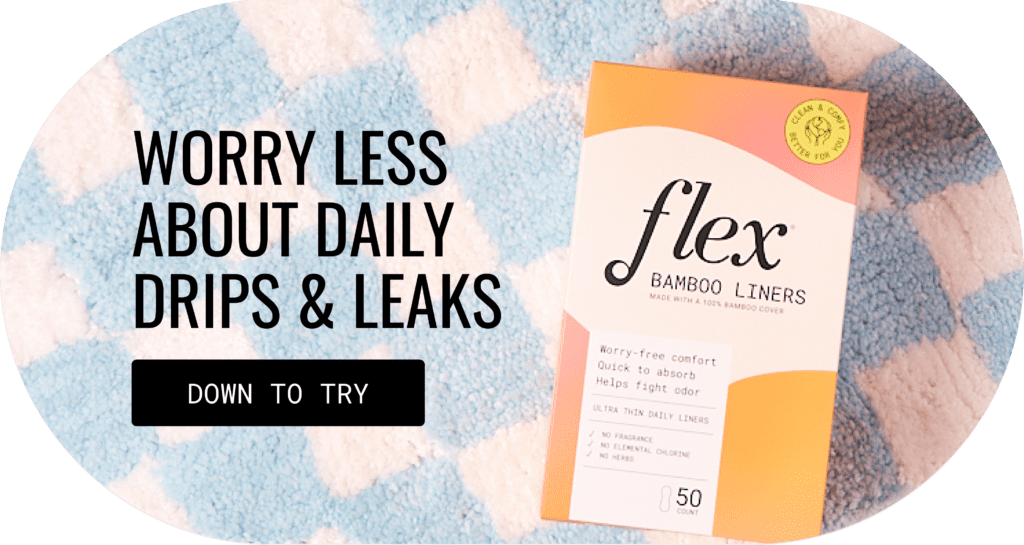
The best underwear for your vagina: Key takeaways
French cut, granny panties, hipsters, or string bikini underwear, normal cotton or pima cotton, more or less coverage, dozens of colors — it all comes down to personal choice. But investing in high-quality, breathable underwear made from cotton is essential for vaginal health. Regularly washing your undergarments in hot water (remember to check the care instructions) after each wear is crucial to prevent infections. Keep an eye out for signs of wear and tear, and upgrade your underwear when needed. Remember, a healthy vagina means a happy you.
This article is informational only and is not offered as medical advice, nor does it substitute for a consultation with your physician. If you have any gynecological/medical concerns or conditions, please consult your physician.
© 2025 The Flex Company. All Rights Reserved.
